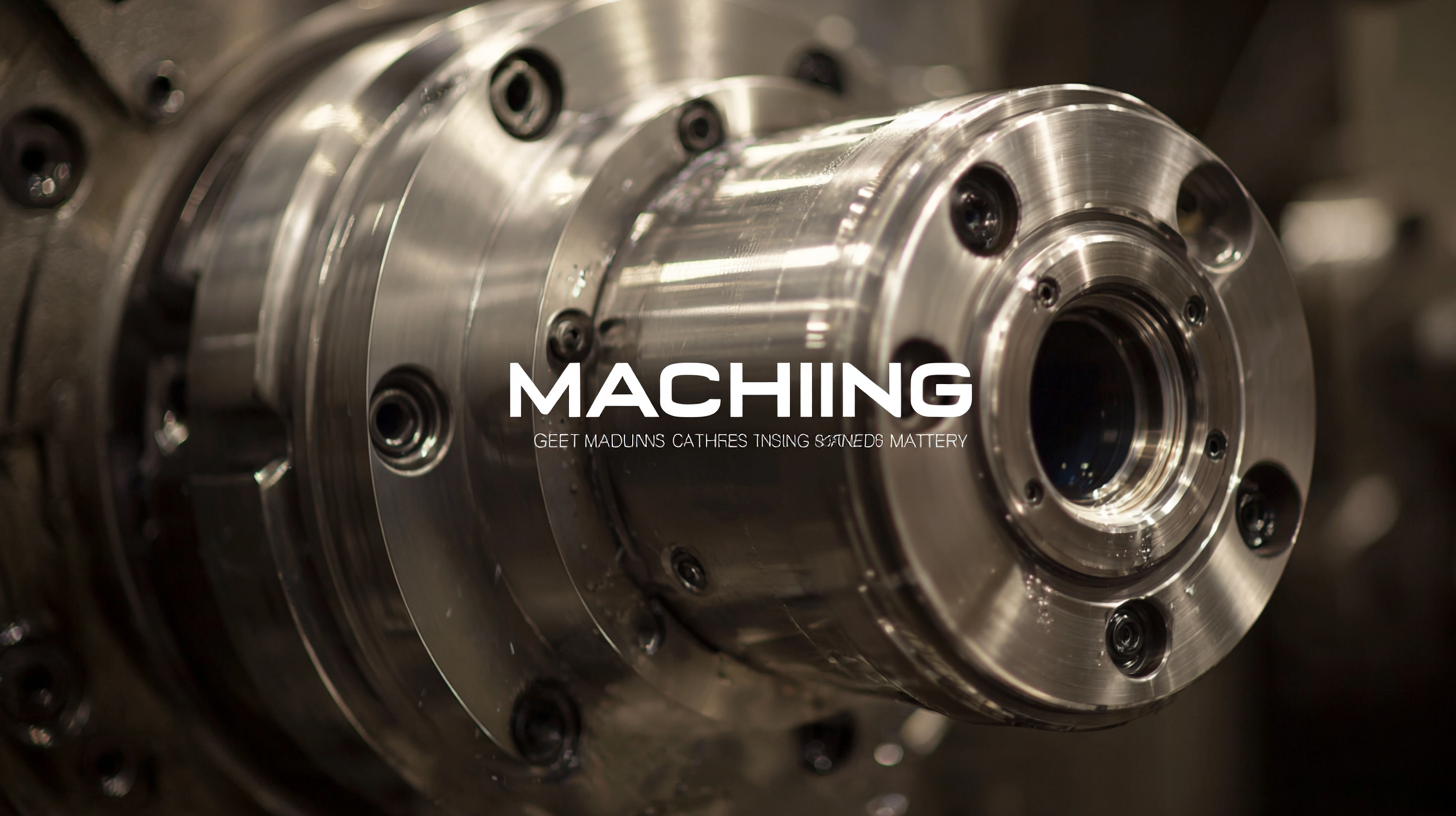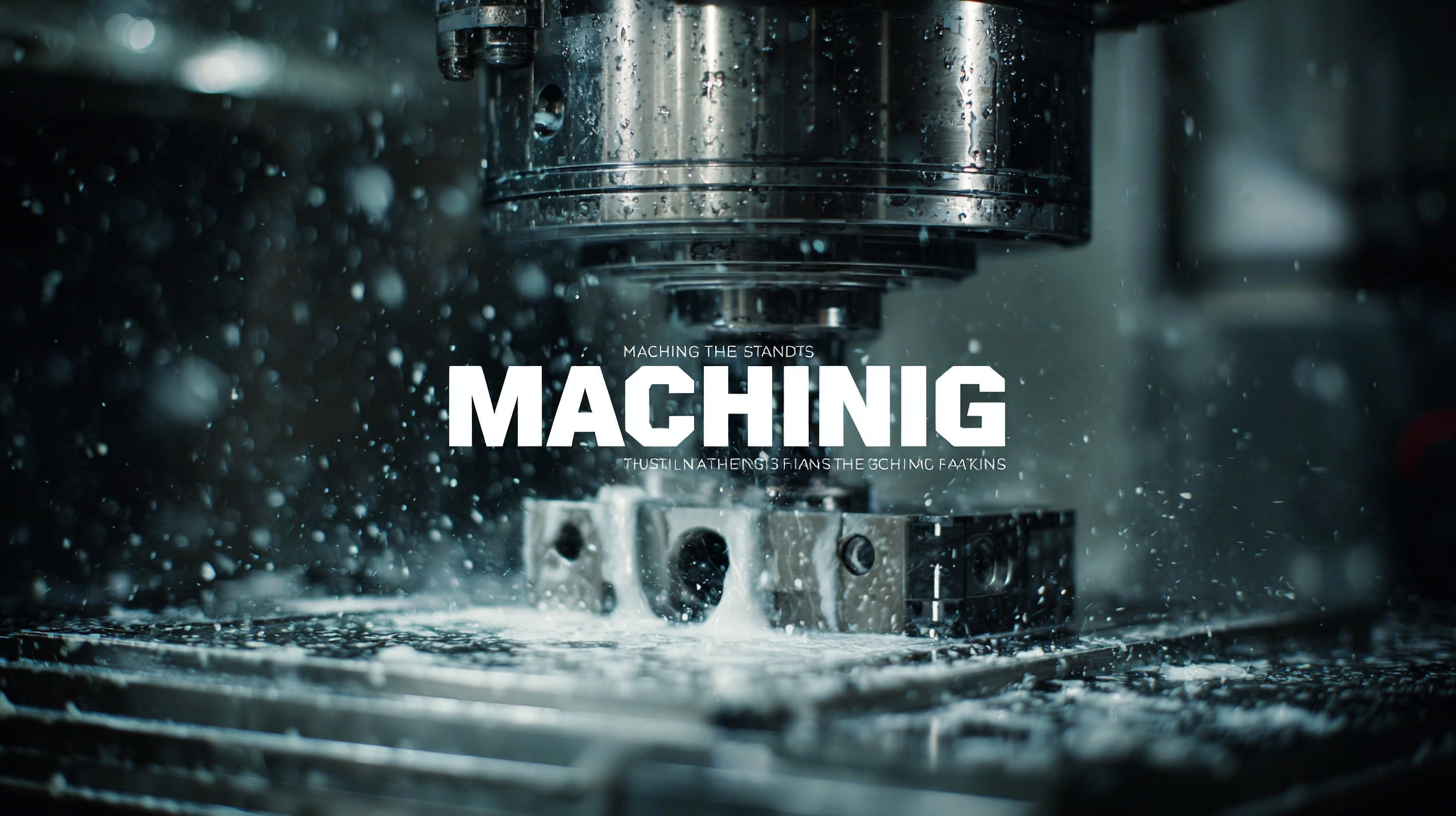In the world of manufacturing, especially in the precision engineering sector, machining cutting plays a pivotal role in ensuring the quality and efficiency of production processes. According to a recent report by MarketsandMarkets, the global machining cutting tools market is projected to reach $107.5 billion by 2025, growing at a CAGR of 6.1%. This growth underscores the increasing demand for high-quality machining solutions that meet rigorous international standards. As industries strive to improve productivity and maintain competitiveness, understanding the global standards for machining cutting becomes essential. China's factories are emerging as leaders in this field, providing outstanding products that align with these standards.

By adhering to best practices in machining cutting, these factories not only enhance their manufacturing capabilities but also elevate their global market position, contributing to a worldwide supply chain that values precision and reliability.
Global standards play a crucial role in machining processes, ensuring consistency, safety, and quality across various manufacturing industries. These standards set benchmarks that facilitate communication among manufacturers, suppliers, and customers worldwide. By adhering to these guidelines, companies can minimize errors, reduce waste, and enhance productivity. This uniformity not only streamlines operations but also fosters trust among business partners and clients, ultimately leading to improved customer satisfaction.
Moreover, global standards are essential for compliance with regulatory requirements, which can vary significantly from one country to another. By meeting international standards, companies can access global markets more easily, expanding their customer base and increasing competitiveness. Furthermore, these standards encourage innovation by motivating firms to adopt best practices and invest in advanced technologies. As a result, the commitment to global machining standards not only uplifts individual businesses but also contributes to the overall advancement of the manufacturing sector on a global scale.
When it comes to machining cutting techniques, understanding the key components of
best practices is crucial for achieving optimal results.
One of the fundamental aspects is selecting the right cutting tool. Tools should be chosen based on
the material to be machined and the specific requirements of the task at hand. For instance, using
high-speed steel tools for softer materials and carbide tools for harder metals can significantly
enhance efficiency and prolong tool life.
 Another critical factor is optimizing cutting parameters such as
speed, feed,
and depth of cut. These parameters should be adjusted based on
the material type and the desired finish quality. A well-calibrated setup not only improves precision
but also reduces wear on tools.
Another critical factor is optimizing cutting parameters such as
speed, feed,
and depth of cut. These parameters should be adjusted based on
the material type and the desired finish quality. A well-calibrated setup not only improves precision
but also reduces wear on tools.
Tips: Always monitor the cutting tool's temperature; excessive heat can lead to premature
wear. Also, don't underestimate the importance of regular maintenance and proper lubrication, which
helps in reducing friction and improving overall machining performance. By adhering to these best
practices, machinists can enhance productivity and maintain high-quality output.
Global standards play a crucial role in the machining industry by establishing benchmarks for quality and efficiency. When manufacturers adhere to these standards, they ensure that their processes are not only reliable but also consistent across different regions and markets. This uniformity allows companies to maintain high-quality outputs, which is essential in meeting customer expectations and reducing defects. By following established guidelines, businesses can minimize variances in production, ultimately leading to increased customer satisfaction.
Moreover, global standards contribute significantly to operational efficiency. They provide a framework for optimizing processes, from material selection to tool design. By leveraging these standards, companies can implement best practices that streamline their production cycles and reduce waste. This approach not only enhances productivity but also encourages innovation, as organizations are motivated to invest in advanced technologies that align with these global benchmarks. As a result, adherence to these standards not only boosts performance but also fosters a culture of continuous improvement within the industry.
| Standard Name | Description | Benefits | Industry Impact |
|---|---|---|---|
| ISO 9001 | Quality management systems -- Requirements | Improves process consistency and customer satisfaction. | Adopted globally across various manufacturing sectors. |
| ISO/TS 16949 | Quality management standard for automotive production. | Enhances product quality and reduces defects. | Critical for automotive suppliers and manufacturers. |
| AS9100 | Quality management system for aerospace industry. | Ensures compliance with safety and reliability standards. | Essential for companies in aerospace manufacturing. |
| ISO 14001 | Environmental management systems -- Requirements. | Promotes sustainable practices and reduces waste. | Adopted by machining companies to improve environmental performance. |
| ISO 45001 | Occupational health and safety management systems. | Creates a safer workplace and reduces accidents. | Increasingly required in machining and manufacturing sectors. |
The integration of technology in machining processes has become crucial in maintaining global standards for machining cutting. According to a report by MarketWatch, the global CNC machine market is projected to reach $100 billion by 2026, highlighting the growing reliance on advanced technology. These computer numerical control (CNC) systems offer enhanced precision, reduced waste, and improved efficiency, which are essential in adhering to stringent quality standards across the industry.
Moreover, advancements in automation and Artificial Intelligence (AI) are transforming how machining is conducted. A study by McKinsey & Company reveals that automation can lead to productivity gains of up to 30% in manufacturing settings. These technologies not only streamline processes but also allow for continuous monitoring of machining operations, ensuring compliance with international standards such as ISO 9001. As manufacturing industries increasingly adopt these smart technologies, the ability to uphold machining standards will be significantly strengthened, resulting in higher quality products and improved competitiveness in the global market.
This chart illustrates the adherence to global machining standards across different regions, reflecting the importance of maintaining high-quality machining practices to ensure efficiency, safety, and excellence in manufacturing.
Navigating the complex landscape of machining operations involves a thorough understanding of compliance with global standards. Adherence to regulations such as ISO 9001 can significantly enhance operational efficiency, reduce error rates, and improve product quality. According to a report by the International Organization for Standardization, organizations implementing ISO standards can reduce operational costs by up to 20%, demonstrating the financial advantages of compliance.
Moreover, the importance of regulatory frameworks is underscored by the findings of a recent study by the American National Standards Institute (ANSI), which revealed that companies that actively pursue compliance are 30% more likely to outperform their competitors in the manufacturing sector. This creates a competitive edge not merely through enhanced reputation but also through increased customer satisfaction and trust. As global markets become more interconnected, understanding and implementing these regulations becomes paramount for machining operations aiming for long-term success and sustainability in the industry.

